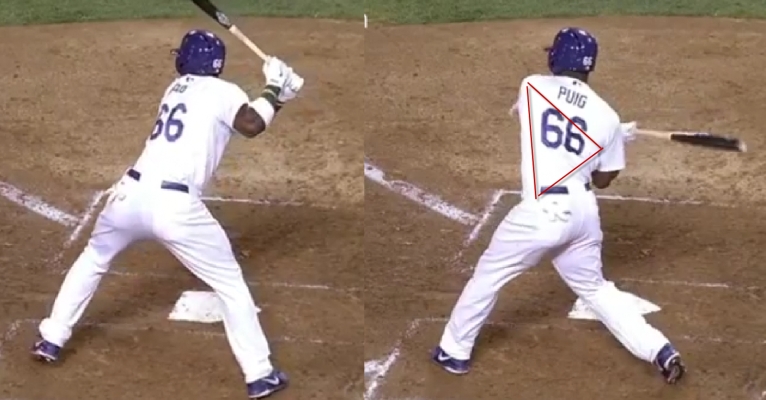I would say that the lines drawn on GIFs are incorrect. You have them approx. 8" apart. I would have drawn them 2"or 3" apart. The weight/COM has shifted in both.
The camera eye is skewed. They aren't at the same angle. Hard to make any claim without a consistent angle.




